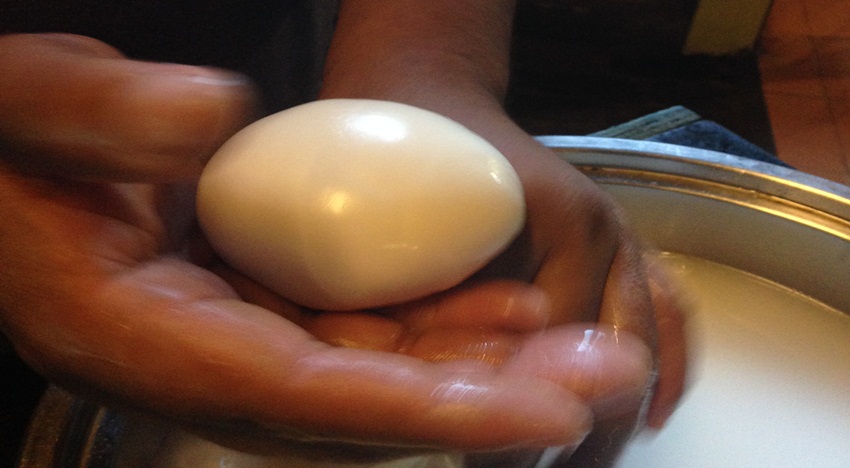
All of us are familiar with stringy mozzarella cheese made from buffalo milk. Historically, rich buffalo milk has only been used to make Italian pasta filata cheeses, of which mozzarella is the most famous. Pasta filata translates to ‘spun paste,’ denoting the important step of spinning curds that have been melted, during the stretching stage of making these cheeses. Burrata and provolone are other examples of cheeses from this category.
In recent years, there has been some interest in attempting new cheeses with buffalo milk. A handful of artisanal cheese makers, one in Australia, a few in Europe, and a couple in North America, have been working on making buffalo milk versions of classics like Camembert, Gorgonzola, and Gouda. Their successes are varied, but mostly promising. I have made a mixed buffalo and cow milk cheese, based on a Lancashire cheese recipe, which turned out to be quite good, but not stellar. Perhaps what we are doing wrong is thinking with a cowmilk hat. We might have to reinvent recipes specifically geared towards buffalo milk and its high calcium issues.
This thought process has me now working on a Blu di bufala – a buffalo milk blue cheese. The recipe is not exactly where I want it to be, but the results are promising. Blue mould is a fungus that needs oxygen and penetrates the cheese along veins the cheesemaker creates by piercing it. Unlike the slow-working, anaerobic bacteria that help ferment milk, these fungi work fast in breaking down large protein structures and softening the cheese. If they work efficiently enough, but not overzealously, they might help mitigate the impending doom of a dry cheese.

Shaping the mozzarella di bufala
I’m working with the cheese makers at The Farm, in Chennai, where I consult often, to ensure the quality of cheese stays high. Mending and stretching hot curds to make cheese creates quite a sweat. The joy of an enormous stretch is unmatched. Hot water is glugged into a giant mixing bowl of warm curds, helping them coalesce into molten sheets of cheese. We spin it around a few times and when the blob is ready, we begin shaping it into balls of white mozzarella di bufala. All the hard work is worthwhile when we sit back after, snacking on some of the discarded morsels of juicy and buttery, fresh off the mill mozzarella.
For the most part, cheese is made by the addition of a bacterial culture to ferment the milk and a coagulant, like rennet, to create solid curds by releasing whey. Buffalo milk has more fat and protein than cow milk. While its marvelous calcium content makes it nutritionally beneficial, it creates difficulties in cheese making, outside of the pasta filata category. The excess calcium creates a very firm curd, resulting in a hard and dry cheese. The creaminess of buffalo milk is lost.
Dairy buffaloes have been around for ages and today provide 13% of the world’s milk. Small, artisanal cheese facilties from New Jersey to Buenos Aires and Java to Seoul are making fresh mozzarella using milk from local breeds. There are several buffalo mozzarella producers all over in India. Thanks to the White Revolution, India is in fact the number one producer of this lush milk in the world (and is also the overall number one producer of milk in the world). It is mostly, however, used to make fresh cheeses like yoghurt, paneer and chhena, and is a great source of cream to make ghee. Amul pioneered methods of making processed cheeses with buffalo milk. As a cheesemaker, I am not particularly fond of processed cheeses. They use the cheapest quality ingredients, destroy the tender chemical properties, and add emulsifying chemicals to hold it all together as a cheese. But, I do admire the efforts of masters like Verghese Kurien, India’s milkman, for creating new dairy products, with a long shelf life.
Walking around the spacious tabela at The Farm, I am reminded of how much I like buffaloes. The scientific community has already bestowed them with the cutest name, Bubalus bubalis. While the calves seem friendly, the adults herd together and scowl at me with remarkable eye contact, displeased by the stranger disturbing their delicate balance. They clearly want me out of there, but I’m here for their milk. I want to make more Blu di bufala. After all, these divas are gifted with the genetics of unwittingly converting unremarkable fodder into exceptional milk.









